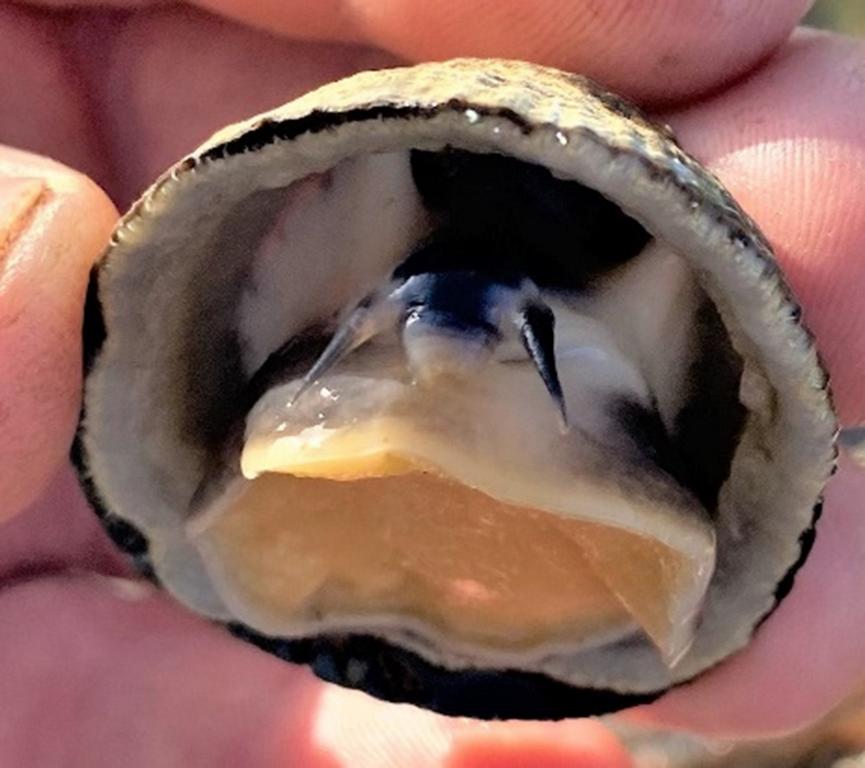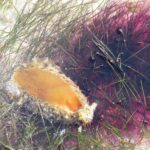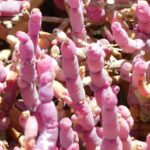Limpets (Scutellastra sp. and others) have conical, oval-shaped shells that range from 1-10cm in diameter depending on the type of limpet. Their shell is ribbed or smooth depending on the limpet species. The shells are normally brown, grey, or black with varying patterns.
A limpet’s body fits snugly into its shell and has a well-developed head and eyes which they use to detect predators. They have a pair of tentacles that they use to source food and feel their surroundings. Their muscular foot allows them to attach to hard surfaces even in rough sea conditions. All limpets are herbivores and use their tongue to graze on algae.

Uses
- Limpets are indicators of a healthy intertidal ecosystem. Changes in the limpet population can show changes in environmental conditions.
- In many coastal regions limpets are harvested for consumption. They are a source of protein and can be prepared in a variety of different ways.
- Limpets can also be used as bait for catching rockfish and even crayfish.
- Limpets are often used in aquariums as algae grazers.
Finding and harvesting
Limpets live in the intertidal zones of rocky shorelines on hard surfaces. They are visible at low tide attached to the rocky surfaces with their strong foot.

If you want to harvest limpets, it is important to check what local regulations are in place and to get the correct permits if needed. Sustainable harvesting is best for the ecosystem. To harvest limpets, you should use a tool such as a flat-head screwdriver or a blunt knife. Carefully insert the tool between the rock surface and the limpet shell and swiftly twist to pry the limpet loose.
Interesting fact

Limpets are renowned for the power with which they cling to rocks. Their method of attachment is adhesion – caused by the release of mucus between the foot and the substratum. It is a similar principle as two sheets of glass with a film of water between them.
References
1) The Living Shores of Southern Africa, Margo & George Branch, Struik Publishers 1981
2) Two Oceans – A guide to the marine life of southern Africa – 4th ed., George Branch et. al., Struik Nature 2016. A partial copy of the older (2008) version of this book can be found here.
Lessons learned about limpets:
- Limpets have well-developed heads and eyes which they use to detect predators.
- They are harvested for human consumption.
- For getting them off rocks it is best to use either a flat-head screwdriver or a blunt knife.
.




